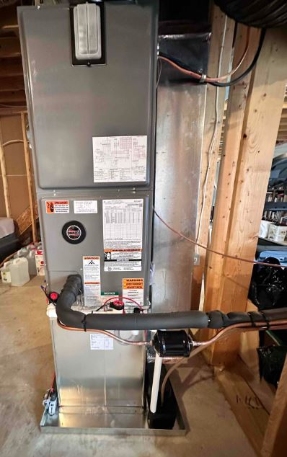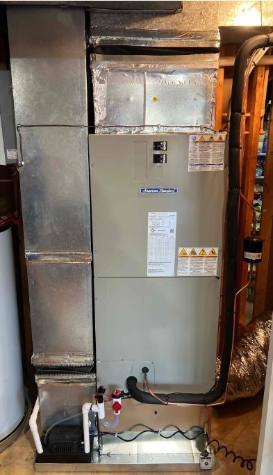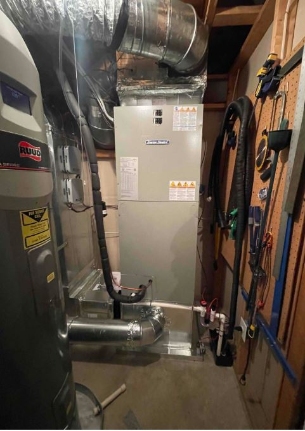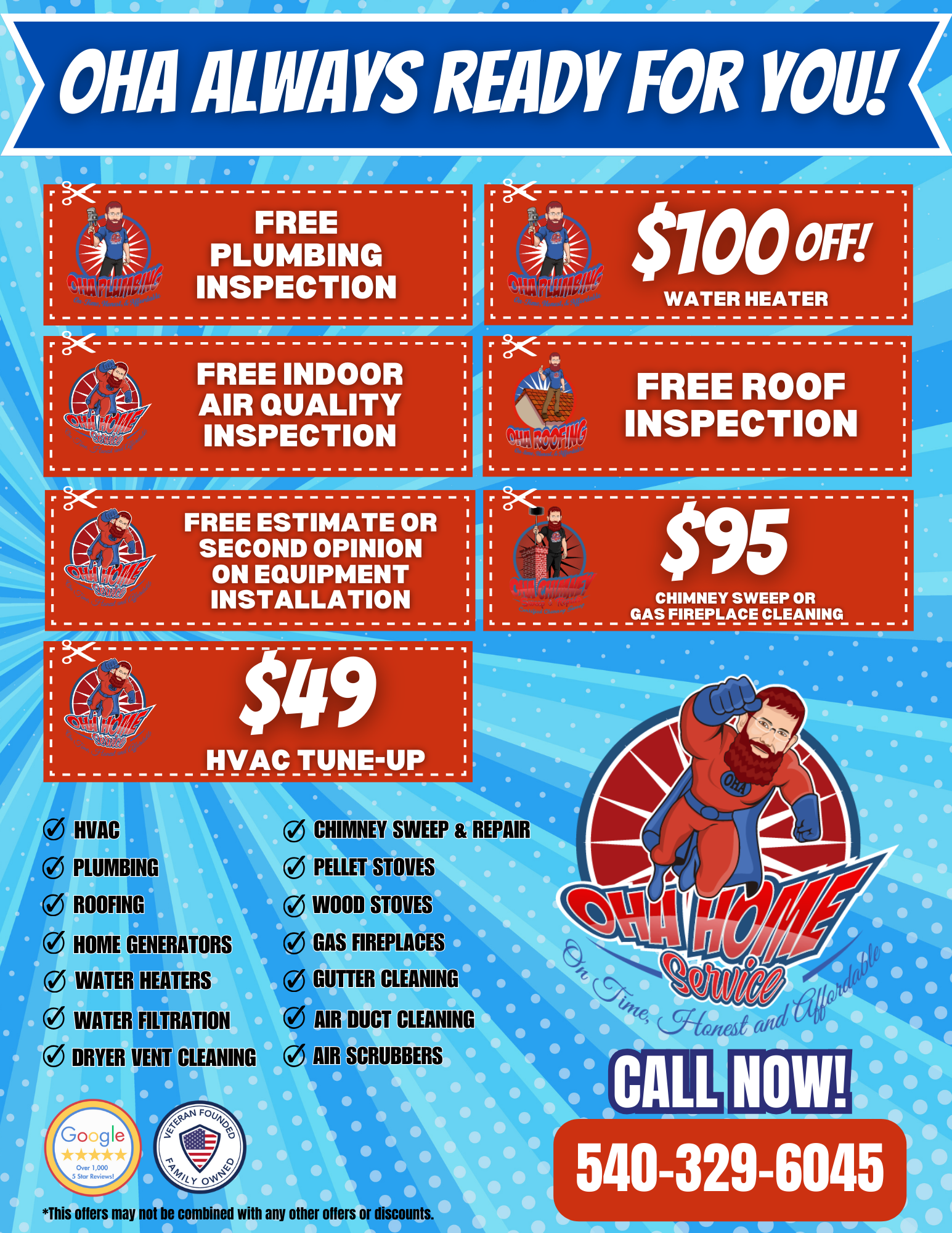As the chilly season rolls in, the last thing anyone wants is a hefty bill for a heating repair. Don’t fret! We’ve got your back with some savvy tips to keep those costs down without sacrificing warmth and comfort. In this guide, we’ll navigate the ins and outs of affordable heating repair. From understanding the quirks of your heating system to smart maintenance and repair choices, we’ll equip you with the knowledge to make those cold months more bearable and less costly. Let’s embark on this journey to ensure your home stays cozy and your wallet remains full.
Understanding Your Heating System
First things first, let’s get familiar with your heating system. Whether it’s a furnace, a boiler, or a heat pump, each system has its quirks. Knowing what you’re dealing with is key. A strange noise or a sudden chill can signify something amiss. We’ll help you decode these signals so you’re never left out in the cold.
Understanding your heating system is crucial to efficient and effective heating repair. Let’s break down the common types:
Furnaces
The workhorses of many homes, furnaces push hot air through ducts. They can be powered by electricity, natural gas, or fuel oil. Common issues include faulty thermostats, dirty filters, and ignition problems. If your furnace is blowing cold air or making unusual noises, it’s a signal to investigate.
Boilers
These heat water and provide either hot water or steam for heating. Boilers are typically powered by natural gas, oil, or electricity. Signs of trouble include leaking water, strange banging sounds, or uneven heating. Regular maintenance checks on the pressure gauge and valves are a must.
Heat Pumps
Acting as both heaters and air conditioners, heat pumps are energy-efficient alternatives. They move heat from the air, ground, or water outside into your home. Common issues include freezing outdoor units, strange noises, and efficiency drops. Regular cleaning of filters and checking for adequate airflow are essential preventive steps.
Each system requires a unique approach to maintenance and repair. By understanding the basics of your heating system, you’re better equipped to recognize the early signs of trouble and address them promptly. This ensures a warmer, more comfortable home and saves you money by preventing minor issues from escalating into major repairs.
Preventative Maintenance: The First Step to Affordability
The secret to dodging those hefty heating repair bills? You guessed it – regular maintenance. Think of it as your heating system’s equivalent of a car tune-up. This not only ensures efficient operation but also prolongs the life of your system. Let’s break down some key preventative steps:
Regular Filter Checks and Replacements
This is a big one. Dirty or clogged filters are the archenemies of efficient heating. They force your system to work harder, increasing wear and tear. How often should you change them? Typically, every 1-3 months, but check your system’s manual for specific recommendations. This simple step can drastically improve airflow and efficiency.
Thermostat Calibration
Your thermostat is the brain of your heating system. Ensuring it’s accurately calibrated can make a world of difference. An improperly calibrated thermostat can lead to over or under-heating, causing unnecessary strain on your system. It’s a good idea to check it seasonally, especially before the heavy heating period kicks in.
Cleaning and Inspection
Regularly inspecting and cleaning key components of your heating system can catch small problems before they escalate. This includes checking for any unusual noises or smells, inspecting the heating vents for blockages, and ensuring the exterior of your furnace or heat pump is clean and clear of debris. But, be careful not to damage any components or to deal with any electrical, gas, or other fuel sources. Leave anything you have questions about to a professional.
Professional Annual Check-Ups
Consider this a yearly health check for your heating system. A professional technician can spot issues you might miss, perform more complex maintenance tasks, and ensure your system is operating at peak efficiency. They can also provide expert advice tailored to your system and usage patterns.
Educate Yourself
Familiarize yourself with the basic operations of your heating system. Understanding how your system works can help you identify potential issues early and communicate more effectively with professionals when needed. Plus, knowing more about the equipment that keeps your home warm and cozy is empowering!
Incorporating these preventative maintenance steps into your routine can significantly reduce the likelihood of unexpected breakdowns and costly emergency repairs. Not only does it save you money in the short term, but it also contributes to your heating system’s longevity and overall health. A little effort goes a long way in ensuring your system is efficient, reliable, and ready to keep you warm through the winter months.
Identifying and Troubleshooting Common Problems
Playing detective with your heating system doesn’t require a magnifying glass, just a keen eye and ear. Common heating issues often have simple solutions, but it’s crucial to know when a problem is beyond a DIY fix and when it’s time to call in the professionals. Let’s explore some typical problems and their troubleshooting steps:
Uneven Heating
If some rooms are colder than others, it might be a sign of blocked air vents or duct issues. Check for any obstructions in your vents and ensure they’re open and unblocked. Also, consider if your ductwork needs cleaning – a task best left to professionals.
Strange Noises
Banging, whistling, or rattling sounds are not the symphony you want from your heating system. Loose parts, air in the system, or a malfunctioning burner could be the culprits. Tightening loose components might solve the issue, but it’s time to consult a technician if the noises persist.
Thermostat Issues
If your thermostat is acting up, it can lead to heating inefficiencies. Ensure it’s set correctly and not accidentally switched to cooling mode. Sometimes, replacing or resetting the batteries can bring it back to normal operation.
Ignition or Pilot Control Problems
These can be tricky and involve components like igniters or pilot lights. If your system struggles to ignite, it could be due to a faulty pilot light or an electrical issue. Basic visual checks of the system are fine, but for more complex issues, a professional should handle it.
Frequent Cycling
If your heater is constantly turning on and off, it could be due to an oversized system, a faulty thermostat, or a clogged filter. Replacing the filter is a simple fix. However, if the issue persists, getting a professional opinion is best.
No Heat Production
First, check the basics – is your system turned on, and is the thermostat set correctly? If all seems in order, but there’s still no heat, the issue could be with the gas supply, pilot light, or the heating elements themselves. These issues typically require a professional’s touch.
Yellow Pilot Light
Your furnace’s pilot light should be blue. If it’s yellow, it indicates a ventilation problem, which could be dangerous. This is a situation where you should immediately turn off your system and call a heating repair professional.
Remember, while some issues can be resolved with a bit of DIY, others indicate more severe problems requiring professional attention. It’s important to err on the side of caution, especially when dealing with complex systems like your home heating. Regular maintenance and timely repairs not only ensure your comfort but also your safety. Stay warm, stay safe, and don’t hesitate to call the experts when in doubt!

DIY vs. Professional Repairs: Making the Right Choice
Navigating the world of heating repair can sometimes feel like walking a tightrope between DIY and professional help. Knowing when to roll up your sleeves and dial the pros is crucial for your safety and the longevity of your heating system. Let’s break down the difference:
What You Can Safely DIY:
- Filter Replacement: This is a simple yet essential task. Regularly changing your heating system’s filters can improve efficiency and is a straightforward process typically outlined in your system’s manual.
- Thermostat Troubleshooting: Issues like checking battery life, ensuring correct settings, or even resetting the thermostat are within the DIY realm.
- Basic Cleaning: Regularly cleaning around your heating system, ensuring vents are dust-free and clear of debris, is a great way to maintain it.
When to Call in the Pros:
- Electrical Issues: Any problem that involves electrical components is a signal to stop and call a technician. This includes issues with wiring or electrical connections within your heating system.
- Gas Leaks or Smells: If you smell gas or suspect a leak, it’s a clear sign to call professionals immediately. Gas leaks are dangerous and require urgent attention from experienced technicians.
- Major Component Repairs: Repairing or replacing major parts like heat exchangers, motors, or burners is not a DIY job. These require specific tools and expertise.
- Persistent Problems: If an issue persists despite your best DIY efforts, it’s time to call in the experts. Recurring problems often indicate underlying issues that require professional diagnosis and repair.
The Benefits of Professional Repairs:
- Expert Diagnosis: A trained technician can quickly identify and efficiently resolve issues that might take you much longer to diagnose and may not be able to fix.
- Safety: Professionals have the training and tools to handle repairs safely, especially important with gas or electrical systems.
- Warranty and Longevity: Professional repairs often come with warranties, ensuring that it will be taken care of if the issue reoccurs. Plus, correctly repaired systems tend to have a longer lifespan.
Cost Considerations:
- Short-Term vs. Long-Term Costs: While DIY might seem cheaper in the short term, incorrect repairs can lead to more significant problems, leading to more expensive repairs down the line.
- Preventative Maintenance Contracts: Many heating repair companies offer maintenance contracts, which might be a cost-effective way to ensure professionals regularly service your system.
While there are aspects of heating repair that are suitable for DIY, understanding the limits of your skills and the complexity of your system is crucial. When in doubt, leaning on professional expertise is often the safest and most cost-effective choice. Remember, the goal is not to fix a problem temporarily but rather to ensure your heating system operates safely and efficiently for as long as possible.
How to Find Affordable Repair Services
When your heating system calls for a professional touch, the challenge often lies in finding a service that’s both reliable and affordable. Fear not! We’ve compiled some tried-and-true strategies to help you find the best value for your heating repair needs. Let’s dive in:
Start with Research
- Online Reviews and Ratings: Websites like Yelp, Google, and Angie’s List are great places to start. Look for companies with high ratings and read the reviews to understand their reliability and customer service.
- Ask for Recommendations: Sometimes, the best leads come from friends, family, or neighbors who’ve had similar work done. Personal recommendations give you insight into the quality of work and customer experience.
Check Credentials
- Licensing and Insurance: Ensure any company you consider is licensed and insured. This protects you in case of accidents or damage during the repair process.
- Certifications: Look for technicians certified by reputable organizations like NATE (North American Technician Excellence). This indicates a higher level of skill and knowledge.
Ask the Right Questions
- Inquire About Experience: How long has the company been in business? What experience do they have with your specific heating system?
- Warranty and Guarantees: Ask about the kind of warranty or guarantee they offer on their work. This can provide peace of mind and protect your investment.
Consider Local, Family-Run Businesses
- Personalized Service: Smaller, locally-owned businesses often provide more personalized service and may be more willing to negotiate on price.
- Community Trust: Local businesses rely on community trust and word-of-mouth, so they’re typically invested in ensuring customer satisfaction.
Understand the Value of Good Service
- Quality vs. Cost: The cheapest option isn’t always the best. Weigh the cost against the quality of service. A slightly higher investment can save you money through more durable repairs.
Look for Special Deals or Off-Season Discounts
- Promotions and Discounts: Some companies offer seasonal discounts or promotions. Off-peak seasons like late spring or early fall might be times when you can get a better deal.
- Energy Efficiency Rebates: Check if any rebates are available for energy-efficient repairs or upgrades. This can significantly lower your overall cost.
Finding the right heating repair service doesn’t have to drain your wallet. You can find a reputable and affordable provider by doing thorough research, asking the right questions, and understanding the value of quality service. Remember, a good repair service not only fixes the immediate problem but also contributes to your heating system’s long-term health and efficiency.
Cost-Saving Tips for Professional Repairs
Getting professional help for your heating repair doesn’t have to mean emptying your wallet. With the right approach and timing, you can significantly reduce the costs. Here are some insider tips to help you save money while ensuring quality repairs:
Timing Your Repairs Strategically
- Off-Peak Seasons: Typically, heating repair services are in high demand during early winter and late fall. Scheduling your repairs during off-peak times, like spring or late summer, can often net you lower rates and faster service.
- Regular Maintenance: Regular maintenance can prevent major breakdowns. Schedule annual or bi-annual check-ups to catch issues early, avoiding more costly repairs later.
Inquiring About Discounts and Special Offers
- Senior, Military, or First Responder Discounts: Many companies offer discounts to seniors, military personnel, and first responders. It’s always worth asking if these apply.
- Seasonal Promotions: Watch for seasonal promotions or special offers, particularly during the off-peak seasons.
Understanding the Scope of Work
- Detailed Estimates: Ensure you get a detailed estimate that breaks down the cost of parts and labor. This transparency helps you understand exactly what you’re paying for.
- Avoiding Unnecessary Repairs: Sometimes, technicians may suggest additional, non-urgent repairs. It’s okay to focus on what’s critical and schedule other repairs for later.
Exploring Service Packages:
- Service Contracts: Some companies offer service contracts or maintenance plans that can be more cost-effective in the long run.
- Bundled Services: If you need multiple repairs, ask if there’s a discount for bundling services together.
Asking About Warranties and Guarantees:
- Parts and Labor Warranties: Understanding the warranty on parts and labor can save you money if there are post-repair issues.
- Satisfaction Guarantees: Some companies offer satisfaction guarantees. This can be a safety net, ensuring you’re not paying for incomplete or subpar work.
Seeking Energy Efficiency Rebates:
- Energy-Saving Upgrades: If your repair involves replacing parts, consider opting for energy-efficient ones. You may qualify for rebates from your local utility company or government incentives.
DIY What You Can:
- Simple Tasks: Handle simple tasks like filter replacement or system cleaning yourself. This reduces the labor costs on professional visits.
By employing these strategies, you can manage the costs of heating repairs without compromising on the quality of the service. Remember, effective communication, understanding the scope of work, and being aware of available discounts and offers are key to finding a cost-effective solution for your heating repair needs.

Long-Term Savings: Investing in Efficiency
When it comes to heating repair and maintenance, a forward-thinking approach focused on energy efficiency can be a game-changer for your finances and comfort. Upgrading to an energy-efficient heating system or enhancing your current system’s efficiency might require an initial investment, but the long-term savings are substantial. Let’s unpack how making this leap can benefit you in the long run:
Understanding Energy Efficiency
- Energy-Efficient Systems: These systems are designed to use less energy to produce the same amount of heat as their less efficient counterparts. This means lower energy bills and less strain on your heating system.
- Efficiency Ratings: Look for systems with high AFUE (Annual Fuel Utilization Efficiency) ratings for furnaces and high SEER (Seasonal Energy Efficiency Ratio) and HSPF (Heating Seasonal Performance Factor) ratings for heat pumps. The higher the rating, the more efficient the unit.
Assessing Your Current System
- Age and Condition: Older systems generally operate at lower efficiencies. If your heating system is over 15 years old, it might be time to consider an upgrade.
- Frequent Repairs: The costs can add up if you’re constantly calling for repairs. A new, more efficient system could reduce these repair costs significantly.
Choosing the Right System
- Size and Type: Choosing a system that’s appropriately sized for your home is crucial. An oversized or undersized system can be inefficient and costly.
- Professional Consultation: Consult with a heating professional to determine the best energy-efficient system. They can provide insights on the most cost-effective options.
Enhancing Efficiency of Current Systems
- Smart Thermostats: Installing a smart thermostat can optimize your heating usage, reducing unnecessary energy expenditure.
- Regular Maintenance: Keep your existing system well-maintained. Regular check-ups and promptly addressing minor issues can improve efficiency.
Environmental Impact
- Reducing Carbon Footprint: By using less energy, you’re saving money and contributing to a reduction in carbon emissions, a win-win for your wallet and the planet.
Future-Proofing Your Home:
- Increased Property Value: Homes with energy-efficient heating systems often have higher property values and appeal more to potential buyers.
Investing in energy efficiency is a smart move for long-term savings. It’s about balancing the initial costs with the future financial and environmental benefits. Upgrading to a more efficient system or enhancing your current one sets the stage for years of comfort, reduced energy bills, and a smaller carbon footprint. Remember, the most efficient heating system is one that’s properly sized, professionally installed, and regularly maintained.
Government and Manufacturer Rebates and Assistance Programs
When facing the costs of heating repair or system upgrades, it’s essential to remember that you might not be alone in this financial journey. Various government and manufacturer rebates and assistance programs can play a significant role in easing the burden. Let’s explore how you can take advantage of these opportunities and turn what feels like an expense into a savvy investment.
Understanding Rebates and Assistance Programs
- Purpose: These programs are often designed to encourage homeowners to choose energy-efficient systems that align with environmental goals.
- Types of Programs: They can vary from direct rebates that reduce the purchase price to tax credits that reduce your taxable income and even low-interest loan programs for home energy upgrades.
Government Rebates and Tax Credits
- Federal Programs: The U.S. government often offers tax credits for energy-efficient home improvements. Check the ENERGY STAR website for up-to-date information on federal tax credits.
- State and Local Programs: Many states and municipalities have additional programs. Depending on your location, these can be more specific and potentially more lucrative.
Manufacturer Discounts and Rebates
- Energy-Efficient Models: Many manufacturers offer rebates on energy-efficient models. It’s a win-win situation; you get a discount, and they promote their energy-efficient products.
- Seasonal Promotions: Keep an eye out for seasonal promotions, especially during off-peak seasons when manufacturers are more likely to offer discounts.
How to Find and Apply for Programs
- Research: Start with a simple online search. Websites like the Database of State Incentives for Renewables & Efficiency (DSIRE) can be a great resource.
- Ask the Experts: Heating repair professionals and system installers are often well-informed about current rebates and can guide you through the application process.
Application Tips
- Documentation: Ensure you have all the necessary documentation, such as proof of purchase and installation.
- Deadlines: Be aware of application deadlines to ensure you get all available programs.
Combining Rebates for Maximum Savings
- Stacking Opportunities: Sometimes, you can combine federal, state, and manufacturer rebates for even more significant savings.
Eligibility Requirements
- Energy Efficiency Ratings: Most rebates require the system or repair to meet certain energy efficiency criteria.
- Residency: Some rebates are only available to residents of certain areas or to homeowners rather than renters.
Long-Term Benefits
- Reduced Energy Bills: By using rebates to upgrade to more efficient systems, you’re saving on the purchase price and reducing your long-term energy costs.
Navigating the world of rebates and assistance programs can seem daunting, but it’s worth the effort. These programs are there to help make your heating repair and upgrade projects more affordable and environmentally friendly. With a bit of research and the right guidance, you can unearth savings that make your heating system repairs or upgrades a wise financial decision. Remember, keeping your heating system efficient saves money and contributes to a healthier planet.
And there we have it – your comprehensive guide to cost-effective heating repair. Armed with this knowledge and a proactive approach, you’re well-equipped to avoid unnecessary expenses and headaches. Keep cozy, make informed decisions, and let’s ensure those heating repair bills stay manageable together!
Choose OHA HVAC, Plumbing, Roofing, Chimney & Fireplaces for Top-Rated, Reliable HVAC Solutions
With over 1,000 5-star Google reviews, OHA HVAC, Plumbing, Roofing, Chimney & Fireplaces is a trusted HVAC contractor. We guarantee on-time service without the wait, transparent pricing with no hidden fees, and unwavering commitment to 100% customer satisfaction. Benefit from our flexible financing options for all credit types and assured safety with thoroughly background-checked technicians. Plus, we can resolve your issue in a single visit*. For dependable, top-quality HVAC services, turn to OHA HVAC, Plumbing, Roofing, Chimney & Fireplaces – where your comfort is our top priority.












